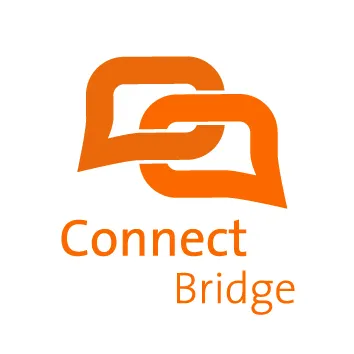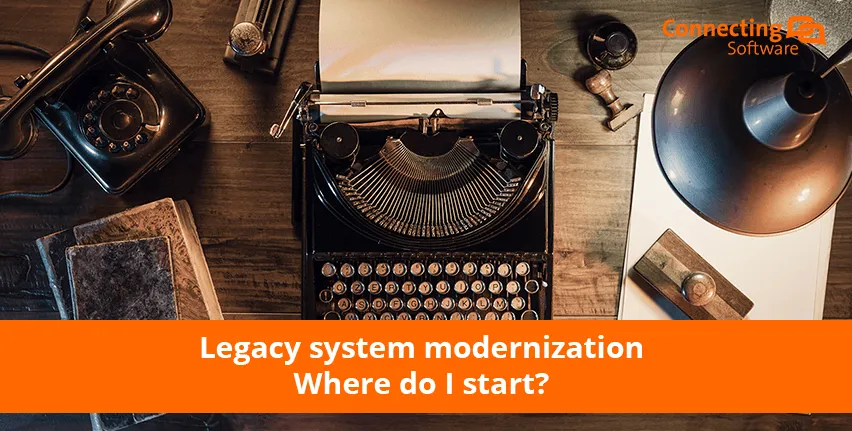Your long trusted custom software is starting to fail you.
You want to make a change. But how do you go about it?
What is the approach that will work best for you: integration or migration?

Does your company have a legacy system? You know, that piece of software that you have had for so long that no one can quite remember how it came to being... Yes, the one that doesn't integrate well with your organization's newer hardware and software systems, and that has become a bottleneck. The one that you cannot update easily, if at all. The one for which you are having trouble finding who to turn to when assistance is needed. Yes, that one! Do you feel like you are stuck with it?
The thing is that legacy software exists because of its value to your organization. Users have been working with it for a long time, and it has served the organization well. Your IT team has become familiar with its limitations and knows all about its quirks. This software that has definitely paid up for itself and the entire organization is somehow comfortable with it.
Nevertheless, at some point, you have started to look at this legacy software from a different angle. And now you can't help feeling you feel stuck with it.
- Have you noticed that it is isolated as if it were an island in the middle of your organization's modern software?
- Don't you think it is fostering outdated processes and workflows, and for that reason getting in the way of the company's growth?
- Doesn't it cost your organization too much time and resources?
At this point, there are two legacy system modernization approaches you can take:
integration or migration.
In any case, the first thing you need to do is to identify what are the processes the legacy system is still supporting. Build your requirements from that. The second one is to find what other software could handle these requirements.
Let's focus on a specific example to see how this goes. Of course, you can later extrapolate from this example to any other kind of business software.
Let’s say you identify the legacy system has the customers and leads information in it, including previous contacts made with them. You see in the legacy system service calls, service orders, repairs and supplies. You think the future would be getting that information in a modern CRM+ERP combination. Let’s imagine further that you choose to go with the Microsoft option, Dynamics 365 with Customer Engagement and Business Central.
But how do you go about it? What is the approach that will work best for you: integration or migration?
Legacy system integration with Dynamics 365
The integration approach implies the legacy systems will work along with new elements of the infrastructure, in this case, with Dynamics. It is a practical compromise solution if the legacy system handles particular situations, and the company wants to keep it, at least, for the time being. Important information, such as information about Contacts and Accounts, can be in sync in both the legacy system and Dynamics.
This type of solution is often a stepping-stone for a planned migration, which means it gets your organization closer to letting the old legacy software go, without doing so for now.
If your company has not worked with Dynamics 365 before, an integration approach will give your team time to get comfortable with the new software. Even if they are already using Dynamics 365, taking things at a slower pace might still be a good thing. You will be able to move the features you like in your legacy system over to Dynamics, test them, and make sure the requirements are fully covered. Then you can train personnel accordingly. Make sure you allocate enough time for training as there seems to be always some resistance to changing the way things are done.
Legacy system migration to Dynamics 365
The other possible approach is to do a one-time migration and then shut down the legacy system for good. This approach usually works best when the legacy software is already causing trouble, and you don't want to put up with it any longer.
The process of moving data from a legacy system to the new software will be the more complicated part of the software migration. The organization needs to outline a plan, allocate resources, estimate effort, and record evolution carefully for data migration. To avoid future problems like finding you never migrated a whole block of data, you must keep a close eye on the data migration tasks. This will also prevent the data migration from turning into a never-ending story, as it is frequently the case.
Can an integration platform help?
A smart way to tackle both integration and migration projects is to build a custom application that handles the specific needs of your project. A custom application can help with both the integration and the migration approaches because it tackles your requirements and the specificities of the original legacy system. You build it yourself, so the focus is on making sure the necessary features are available for the end-user.
But can you afford to build a custom application as part of a project with a tight deadline and budget?
This is where an integration platform, such as Connect Bridge, can come in. It allows you to use any programming language to build your custom integration software with much fewer lines of code.
You can use Connect Bridge’s database-style connection to connect to virtually any packaged software using its wide array of 400+ connectors.
How can Connect Bridge help?
Here are the key advantages:
- Speed - As you start from a pre-tested solution, you will need a reduced number of lines of code, and you will have fewer errors.
- Simplicity - You will not need to use Dynamics' API at all. You will only use Connect Bridge and standard SQL syntax instead. The CB Dynamics connector will translate the SQL statements into API calls. Software development teams master Connect Bridge within hours, and that is much faster than what it takes them to master the API. Moreover, the next time you need to integrate with another system, you get to leverage what you learned on your initial project. You won't need to learn a new API or anything at all, in fact.
- Analytical features – Having the ability to view the target system as if it were a database is very useful for establishing the data migration paths. Having a Query tool to test out potentially interesting queries will allow you to leverage the full power of the SQL language.
- Team Efficiency - You can handle Connect Bridge projects with a much smaller team, as the project, as a whole, is much simpler. This can save you a huge amount of communication effort… and money.
- Maintenance – Connect Bridge guarantees forward and backward compatibility. That means that when there is an update for Dynamics, Connect Bridge will handle it. You won't have to worry, and this is especially important for integration projects.
We have been discussing integrating and migrating to Dynamics365, but the same solution works for many other types of software. Connect Bridge's database-style connection and comprehensive array of 400+ connectors can be used to connect to almost all packaged software.
The Connect Bridge connectors include the following areas:
- Document Management Systems (DMS, such as Microsoft SharePoint)
- Customer Relationship Management (CRM, such as Microsoft Dynamics 365 which was used as an example)
- ERP/Accounting (such as Dynamics NAV, Dynamics 365 BC, Quickbooks or SAP)
- Communication and collaboration (Email, Calendar, Tasks and Notes, so you can think of Microsoft Exchange and Outlook or Gmail and Google Calendar)
- Database (such as SQL Server, Oracle, MySQL, MariaDB)
- OData (such as Microsoft Excel)
- Industrial IoT (OPC UA)
Takeaway
Integrating a legacy system is no small task or one that you should take lightly. Neither is doing a full migration.
However, when such modernization projects are complete, you see that they can really make a difference. The bottleneck effect the legacy software had on your organization disappears. Workflows are adjusted, and productivity increases.
The best way to get to that point is to simplify that integration or migration. To achieve that without compromising on your requirements, you can turn to an integration platform like Connect Bridge. Our experts can help you figure out the best approach for your specific case. Get in touch with them by sending them an e-mail or using our contact form.
Read more in our latest posts
About the autor

By Ana Neto, technical advisor at Connecting Software.
"I have been a software engineer since 1997, with a more recent love for writing and public speaking. Do you have any questions or comments about this post or about Connect Bridge? I would love to have your feedback!"
ana@connecting-software.com
